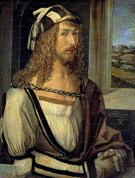Art, Art History and Design, School of

School of Art, Art History, and Design: Faculty Publications and Creative Activity
Document Type
Article
Date of this Version
2015
Citation
Published in Die Klage des Künstlers: Krise und Umbruch von der Reformation bis um 1800, ed. Birgit Ulrike Münch, Andreas Tacke, Markwart Herzog, Sylvia Heudecker (Petersburg: Michael Imhof Verlag GmbH & Co. KG, 2015), pp. 70-81.
Abstract
The plight of painters and other artists was not an easy one when the Reformation made inroads into German-speaking lands. Commissions for Catholic subjects and altarpieces dried up as a result of Lutheran influence. Two laments dating from the early Reformation period address the artist's situation. Both are brief, date from 1526 and 1528, and appear in different contexts - one in a letter of introduction and the other in a printed pamphlet. The first concerns the painter Hans Holbein the Younger (1497/98- 1543) whose portraits painted for King Henry VIII and his court indicate that the pictorial genre of portraiture and the painter himself were popular during the Reformation in London, but not in Basel.2 The second lament involves Sebald Beham (1500-50) who has become well known as a 'godless painter' within the context of a Nuremberg trial.3 Although Holbein's lament was written about him by someone else, Beham's was penned by the painter himself. Both laments point to the role the Reformation played in reducing work for painters in the years following 1525. In order to place Holbein's and Beham's laments in historical perspective, I will discuss events that led to Beham and to his exodus from Nuremberg. First, I will briefly address the better known lament by Holbein and its relation to Basel, painting, and printing. Second, Beham's complaint for Nuremberg and the arts will be discussed within the context of one printed booklet penned by him. Both laments indicate that the shrinking audience resulting from the early Reformation extended to publishing and printed book illustrations, and that the designers of such book illustrations experienced difficulties even in Lutheran cities that were also imperial cities.
Included in
Ancient, Medieval, Renaissance and Baroque Art and Architecture Commons, European Languages and Societies Commons, Fine Arts Commons


Comments
Copyright (c) 2015 Alison Stewart.